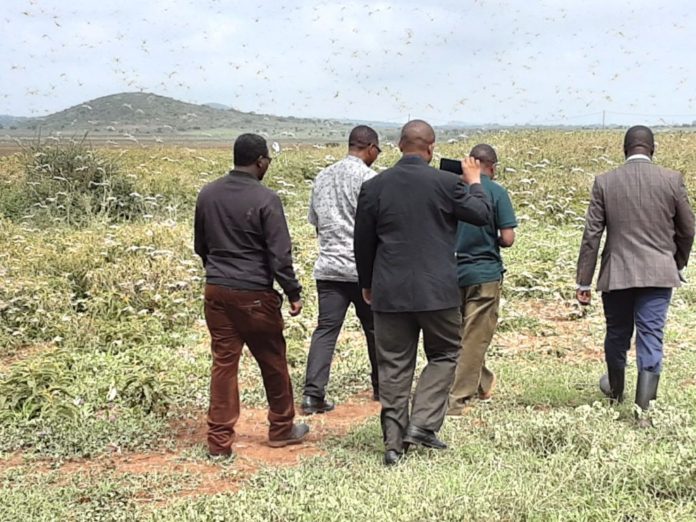Dar es Salaam, Tanzania — At first glance, Hilder Tarimo, a local farmer in a sleepy Ngai Nairobi village in Tanzania’s Siha district, thought the dark dense blot darkening her horizons was clouds ushering in some rains.
But when a swarm of fast-moving creatures finally descended on her farm, the danger was real.
“It felt like a huge cloud falling from the sky,” said Tarimo, who grows maize, beans, and vegetables on her farm.
Efforts to scare them away with smoke did not work since the insects descended in their millions, Tarimo said.
“They caused a lot of destruction in a matter of hours,” she said.
Pleasant Surprise
As local villagers struggled to scare away the invaders, they had a pleasant surprise when they spotted a small plane sprinkling powdery water from the sky barely hours after they arrived, thanks to the swift government action.
Tanzania is battling a wave of desert locusts that has spread in the northern Kilimanjaro and Arusha regions, razing vegetation causing panic among farmers who fear the destruction of their crops.
Although local authorities say the latest invasion of highly mobile creatures is under control, local farmers are still worried about the unwelcome guests who pose a real threat to their crops.
Onesmo Biswelu, Siha District Commissioner said swarms of locusts, which invaded plantations at Ngare Nairobi ward since Tuesday have been obliterated by pesticides sprinkled from special planes.
“We have successfully contained the spread through aerial spraying of powerful pesticides,” Biswelu said.
The Worst Invasion
East Africa had experienced the worst invasion of locusts in the past year, triggering food shortages in Ethiopia, Kenya, and Somalia. The destructive creatures, believed to be fuelled by the changing weather patterns are a potential threat to food security, according to the Food and Agriculture Organization.
In January last year, Kenya suffered the worst outbreak of desert locusts in 70 years, as millions of insects swarmed into farmlands destroying crops thus threatening the country with hunger.
Contingency Planning
As part of its contingency planning, the government of Tanzania said it will apportion a sufficient budget in the next financial year to purchase insecticide spraying and mapping equipment including motorized drones to combat destructive insects.
Adolf Mkenda, Tanzania Minister for Agriculture and cooperatives said spraying is an effective strategy to combat locust infestation adding that officials are currently using two hired planes for the task.
“There’s no reason for people to panic, the problem is under control,” he said Wednesday.
The minister said the government is closely monitoring the movement of locusts in all affected regions and will accordingly spray pesticides to kill them.
The minister warned local residents in Siha, Simanjiro, and Longido districts where locusts have been spotted to avoid eating or touching insects since they may contain poisonous substances.
Jeremiah Sanka, a resident of Longido told The Citizen newspaper that locusts invasion is disconcerting especially now maize has started to germinate.
“If the maize is eaten it will be such a huge loss,” he said.

